#Solar PV System Design
Explore tagged Tumblr posts
Text
How Can Solar PV Design Software Improve Your Solar Projects?
Solar energy is booming, and designing an efficient solar power system requires careful planning. This is where Solar PV Design Software comes in handy. Whether you are an engineer, installer, or business owner, using the right tools can help optimize panel placement, maximize energy production, and ensure compliance with local regulations.
But how do these software solutions work? And how does PV Design AutoCAD enhance the accuracy of your designs? Let’s break it down in simple terms.
What is Solar PV Design Software?
Solar PV Design Software is a specialized tool that helps solar professionals create, analyze, and optimize solar power system layouts. These tools use advanced algorithms and databases to calculate essential parameters like:
Solar panel placement – Ensures panels are positioned for maximum sunlight exposure.
Energy yield estimation – Helps predict how much power the system will generate.
Shading analysis – Identifies potential obstructions like trees or buildings.
Electrical design – Assists in determining wiring, inverters, and other system components.
Cost estimation – Provides an estimate of installation and maintenance costs.
Using Solar PV Design Software simplifies these complex calculations, making it easier to design systems that meet both performance and budget requirements.
How Does PV Design AutoCAD Improve Solar Planning?
PV Design AutoCAD is a valuable extension of traditional CAD software, specifically tailored for solar PV design. Since many engineers and designers are already familiar with AutoCAD, integrating PV design tools into this platform makes the process much smoother.
Here’s how PV Design AutoCAD improves solar system planning:
Precision & Accuracy – AutoCAD’s detailed drafting tools allow for exact placement of solar panels, inverters, and other components.
Automated Calculations – The software can generate electrical diagrams, energy yield reports, and shading analyses automatically.
Easy Modifications – If adjustments are needed due to site constraints or customer preferences, changes can be made without starting from scratch.
Compatibility with Industry Standards – Many AutoCAD-based PV design tools follow local and international solar installation guidelines, ensuring compliance.
For professionals who work in solar engineering, PV Design AutoCAD enhances workflow efficiency and reduces design errors.
Key Features to Look for in a Solar PV Design Software
If you���re considering using Solar PV Design Software, look for these essential features:
User-Friendly Interface – A simple layout that makes it easy to navigate.
3D Modeling – Helps visualize how the panels will fit on a roof or ground space.
Weather & Location Data Integration – Uses real-time data to improve accuracy.
Financial Analysis Tools – Calculates return on investment (ROI) for solar projects.
AutoCAD Integration – If you work with CAD, software that supports PV Design AutoCAD will be highly beneficial.
Who Can Benefit from Solar PV Design Software?
These tools are useful for:
Solar Installers – To design optimized solar systems for residential and commercial projects.
Architects & Engineers – To integrate solar panels into building designs.
Business Owners – To evaluate solar energy investments for their properties.
Government & Research Institutions – To analyze solar energy potential for large-scale deployments.
Conclusion
Whether you're planning a small rooftop system or a large solar farm, using Solar PV Design Software ensures accuracy, efficiency, and cost-effectiveness. If you work with AutoCAD, choosing a software that supports PV Design AutoCAD can further improve your workflow.
With the right tools, you can make informed decisions, maximize solar energy production, and contribute to a greener future.
Would you like to explore some free or premium Solar PV Design Software options? Let us know in the comments!
#Autocad Solar PV Design#Solar System Layout#Solar Design Software#Solar Design Tool#PV Design Software#Solar PV Design Software#PV Solar Design Software#Solar PV Design
0 notes
Text
Solar PV System Design Course Online - Become an Expert in Solar Power Design
Master the art of solar pv system design course online at Energy Training Group. Learn to design efficient and effective solar power systems with hands-on training and expert guidance. Ideal for professionals seeking to specialize in solar energy, our accredited course provides flexible online learning, empowering you to advance in the booming renewable energy industry. Enroll now and start designing the future of energy!
0 notes
Text
Empower Your Home with VASO’s Tailored Solar Solutions
In the quest for sustainable living, the value of personalized solar solutions is paramount. At VASO Energy Solutions, we go beyond conventional installations. We craft solar solutions that align perfectly with your home’s unique energy needs and architectural style.
Why Personalized Solar Designs Matter:
In the vast landscape of solar energy, one-size-fits-all solutions often miss the mark. Your home has its own story, energy requirements, and architectural style. That’s where tailored solar designs come into play. Custom solutions ensure that your solar system isn’t just another addition but a well-integrated fixture optimized for maximum efficiency. This isn’t just about saving on bills; it’s about harnessing solar energy in the most effective way possible, reducing waste, and contributing to a greener planet.
How VASO Energy Solutions Does It:
At VASO Energy Solutions, excellence in customization is not just a promise; it’s our practice. With our team’s expertise in cutting-edge solar technology and design principles, every solar project becomes a testament to innovation and efficiency. Our process begins with understanding — comprehending your unique energy needs, your lifestyle, and the intricate details of your property.
Our approach is methodical yet flexible. We conduct comprehensive energy assessments to gauge your requirements accurately. Using state-of-the-art technology, we tailor each solar project to produce the optimal energy output. Whether you’re powering a cozy home or a sprawling industrial complex, VASO ensures that your solar system is meticulously designed to meet your specific energy demands.
Ensuring Your Unique Requirements Are Met:
The journey to a custom solar solution begins with a detailed consultation. Our experts sit down with you to discuss and understand your energy needs and future goals. We appreciate that your requirements are as unique as your fingerprint. VASO’s flexibility in adapting to a wide array of project needs sets us apart in the realm of custom solar solutions. We’re not just service providers; we’re your partners in transitioning to sustainable energy.
Aesthetic Preferences in Solar Projects:
Today’s solar projects transcend functionality; they embrace aesthetics. VASO Energy Solutions prides itself on a portfolio where solar functionality and aesthetic value coexist harmoniously. We don’t just install solar panels; we ensure they complement and enhance the visual appeal of your property. Customization extends beyond efficiency. Our design team meticulously considers architectural nuances, color schemes, and overall visual harmony to ensure that your solar installation is not just functional but also an elegant addition to your environment.
Scalable Solutions for Future Needs:
As your energy needs evolve, so should your solar solution. VASO Energy Solutions is synonymous with adaptability and foresight. Our scalable solutions are designed to accommodate your growing needs. Whether you’re expanding your living space, incorporating new energy-dependent technologies, or adjusting to lifestyle changes, VASO ensures that your solar infrastructure is not just for today but for the future.
Conclusion:
VASO Energy Solutions represents a commitment to a sustainable future, where energy solutions are tailored to each client’s unique needs and aesthetic preferences. Embarking on a journey with VASO means choosing a path of energy freedom, innovation, and elegance. Explore the power of tailored solar projects with VASO, and embrace a brighter, more sustainable future.
Reference - https://vasoenergysolutions.com/empower-your-home-with-vasos-tailored-solar-solutions/
0 notes
Text
Dandelion News - April 1-7
Like these weekly compilations? Tip me at $kaybarr1735 or check out my Dandelion Doodles! Last month’s Doodles are free to the public, so go take a look :D
1. Galapagos tortoises at Philadelphia Zoo become first-time parents at nearly 100

“Mommy, the female tortoise, is considered one of the most genetically valuable Galapagos tortoises in the Association of Zoos and Aquariums’ species survival plan. [… T]he zoo said it is “overjoyed” at the arrivals of the four hatchlings, a first in its more than 150-year history.”
2. Massachusetts home-electrification pilot could offer a national model

“In total, the program is providing free or heavily subsidized solar panels and heat pumps to 55 participating households, 12 of which also received batteries at no cost. […] It’s a strategy that program planners hope can help address the disproportionate energy burden felt by lower-income residents of the region[….]”
3. National Park Rangers rebel against queer erasure on Trans Day of Visibility

“[… A] group of over 1,000 off-duty, fired, and retired National Park Service employees launched Rangers Uncensored, an online archive that restores and amplifies LGBTQ+ stories quietly scrubbed from government websites since President Donald Trump’s second inauguration.”
4. World's largest wildlife crossing reaches critical milestone

“Over the next few days they'll be adding 6,000 cubic yards of specially manufactured soil to cover the crossing, a mix of sand, silt and clay inoculated with a bit of compost and hyperlocal mycorrhizal fungi, carefully designed and tested to mimic the biological makeup of native soils around the site.“
5. Bipartisan bill to boost green building materials glides through House

“[B]ipartisan legislation the House of Representatives passed in a 350-73 vote last week would give the Department of Energy a clear mandate to develop a full program to research, develop, and deploy clean versions of the building materials.”
6. Tribal Wildlife Grants Funding Announced
“Tribal Wildlife Grants are intended to help Tribes develop programs for the conservation of habitat and species of traditional or cultural importance[….] Typically funded projects include: conservation planning, fish and wildlife management and research, habitat mapping and restoration, inventory and monitoring, and habitat preservation. […] A total of $6.1 million is available for this round of funding[….]”
7. Germany adds another one million PV arrays to take solar total to 104 gigawatts
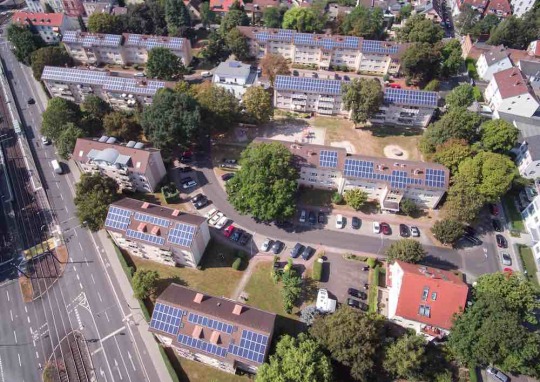
“Following a rapid rise in household solar panel installations, Germany’s total number of PV arrays has passed the five million “milestone[.…]” Solar systems already cover almost 15 percent of Germany’s electricity demand, BSW-Solar said. […] The total capacity of all PV systems installed in Germany surpassed 100 GW at the start of the year.”
8. Stronger together: Bilby conservation efforts enhanced by Indigenous knowledge

“Ms. Geyle said the results showed combining [conventional science and traditional tracking methods] more accurately estimated bilby abundance than using either technique individually[….] "[… ensuring] that Indigenous people remain central to decision-making about their lands and species that inhabit them," Ms. Geyle said.”
9. Lennar will build 1,500new Colorado homes with geothermal heat pumps

“The homebuilder is partnering with Dandelion Energy to install the tech, which is efficient but expensive — unless it’s built into new homes from the start. […] And by eliminating the need for new gas pipelines and reducing the peak electricity demands on the power grid, subdivisions built on this model could save a bundle on utilities as well[….]”
10. New strategy launched to protect Tanzanian biodiversity hotspot

“Conservationists have launched a 20-year-long project to protect what is arguably Tanzania’s most biologically rich landscape: the Udzungwa Mountains. The strategy places notable emphasis on communities living here, with more than half of its budget allocated to social and economic projects and managing human-wildlife conflict.”
March 22-28 news here | (all credit for images and written material can be found at the source linked; I don’t claim credit for anything but curating.)
#hopepunk#good news#nature#philadelphia#zoo#galapagos#tortoise#solar panels#clean energy#national park service#lgbt+#lgbt#lgbtq#park ranger#wildlife#us politics#ecology#green infrastructure#indigenous#habitat restoration#germany#solar energy#solar power#australia#geothermal#heat pump#energy efficiency#biodiversity#tanzania#animals
267 notes
·
View notes
Text
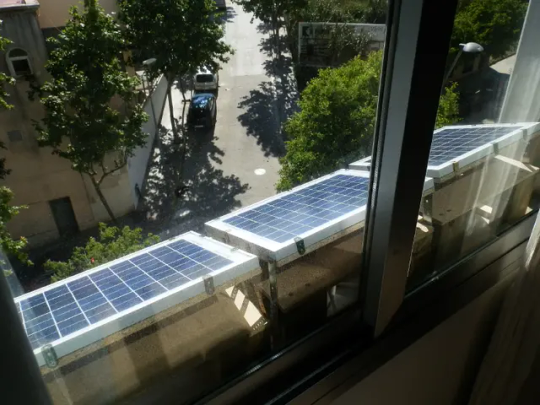
How to Build a Small Solar Power System - Low-tech Magazine
Readers have told me they like to build small-scale photovoltaic installations like those that power Low-tech Magazine’s website and office. However, they don’t know where to start and what components to buy. This guide brings all the information together: what you need, how to wire everything, what your design choices are, where to put solar panels, how to fix them in place (or not), how to split power and install measuring instruments. It deals with solar energy systems that charge batteries and simpler configurations that provide direct solar power. Conventional solar PV installations are installed on a rooftop or in a field. They convert the low voltage direct current (DC) power produced by solar panels into high voltage alternate (AC) power for use by main appliances and rely on the power grid during the night and in bad weather. None of this holds for the small-scale systems we build in this manual. They are completely independent of the power grid, run entirely on low voltage power, and are not powering a whole household or city but rather a room, a collection of devices, or a specific device. Small-scale solar is decentralized power production taken to its extremes. Most of the work in building a small-scale solar system is deciding the size of the components and the building of the supporting structure for the solar panel. Wiring is pretty straightforward unless you want a sophisticated control panel. You only need a limited set of tools: a wire stripper, some screwdrivers (including small ones), and a wood saw are the only essentials. A soldering iron, pliers, and a multimeter are handy, but you can do without them.
241 notes
·
View notes
Text

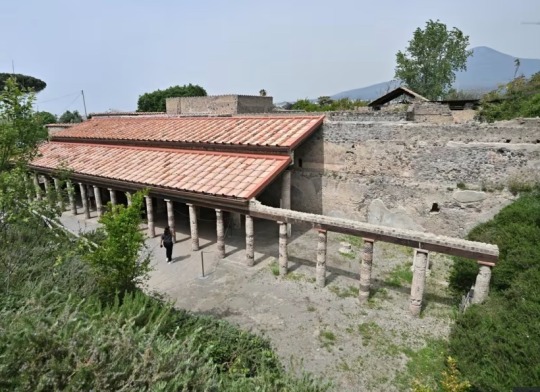
‘Ancient Roman’ Solar Roof Tiles Power Pompeii Villa
Ancient Roman ruins at Pompeii have been fitted with invisible solar panels, in a move that will contribute to the archaeological site’s sustainability efforts and cut costs. The innovative panels, which blend into the background by imitating traditional materials, were installed on the House of Cerere, on a thermopolium — a Roman snack bar — and on the House of the Vettii, which recently reopened following 20 years of restoration work.
“They look exactly like the terracotta tiles used by the Romans, but they produce the electricity that we need to light the frescoes,” said Gabriel Zuchtriegel, the director of the archaeological park of Pompeii, in a press release.
Each year, 3.5 million tourists explore the vast ruins of the ancient Roman city, which was buried by the eruption of Mount Vesuvius in 79 AD. But due to Pompeii’s size, energy bills are expensive and conventional methods of providing power across the site can threaten its appearance.

“Pompeii is an ancient city which in some spots is fully preserved,” Zuchtriegel said. “Since we needed an extensive lighting system, we could either keep consuming energy, leaving poles and cables around and disfiguring the landscape, or choose to respect it and save millions of euros.” The new technology will help the archaeological site to cut energy bills and make it more enjoyable, he added.
The invisible solar panels — or “traditional PV tiles” as they are technically known — were created by the Italian company Dyaqua. They can be designed to appear like stone, wood, concrete or brick, and hidden on walls, floors and roofs, according to Elisabetta Quagliato, whose family owns Dyaqua, in the press statement.
“We are an archaeological site but we also want to be a real-life lab for sustainability and the valorization of intangible heritage,” Zuchtriegel said. “Our initiative is not merely symbolic. Through the million tourists who visit us every year, we want to send a message to the world: cultural heritage can be managed differently and in a more sustainable way.”
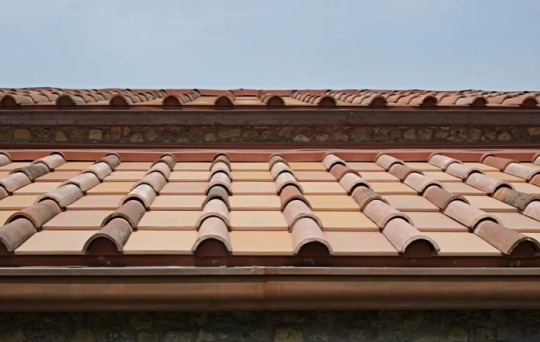

Other locations in Italy using the invisible solar technology are the commune of Vicoforte in Italy and, soon, Rome’s contemporary art museum Maxxi. Public buildings in Evora, Portugal, and Split, Croatia will also install the panels, according to the press statement.
Pompeii’s recent use of these panels is just the beginning, Zuchtriegel said. “From now on, we will be taking this solution into account for all future renovation and restoration projects.”
By Garry Shaw.



#‘Ancient Roman’ Solar Roof Tiles Power Pompeii Villa#House of Cerere#House of the Vettii#thermopolium#terracotta tiles#solar power#frescoes#mount vesuvius#ancient artifacts#archeology#archeolgst#history#history news#ancient history#ancient culture#ancient civilizations#roman history#roman empire#roman art
286 notes
·
View notes
Text
Since its development in the 1970s, the luminescent solar concentrator (LSC) has been designed to improve solar energy capture by utilizing luminescent materials to convert and focus sunlight onto photovoltaic (PV) cells. Unlike traditional concentrators that depend on mirrors and lenses, LSCs can harness diffuse light and are often employed in building-integrated photovoltaics, where their semitransparent and colorful properties provide aesthetic advantages. However, scaling up LSCs to cover large areas has been challenging due to issues like self-absorption of photoluminescent (PL) photons within the waveguide. Researchers at Ritsumeikan University (Japan) have proposed an innovative “leaf LSC” model that promises to overcome such limitations by enhancing the collection and transfer of light to photovoltaic cells.
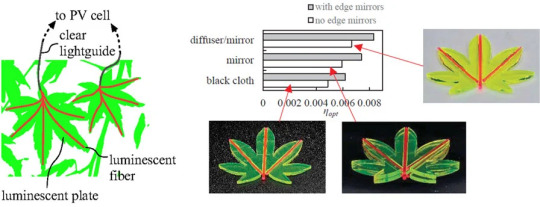
The leaf LSC design addresses the scalability problem by using smaller, interconnected luminescent components that function like leaves on a tree. As reported in the Journal of Photonics for Energy (JPE), this innovative setup involves placing luminescent plates around a central luminescent fiber, with the plates’ sides facing the fiber. This arrangement allows incident photons to be converted into PL photons by the plates, which then travel through the fiber and are collected at its tip by a PV cell. To enhance efficiency, clear lightguides connect multiple fibers to a single PV cell, effectively increasing the incident area of the LSC while reducing photon losses due to self-absorption and scattering.
8 notes
·
View notes
Text
Linkpowercharging: Leading the New Era of Electric Mobility

Founded in 2018, Linkpowercharging has been deeply engaged in the electric vehicle charging field for over 8 years. We specialize in providing comprehensive R&D solutions—including software, hardware, and design—for AC/DC charging stations, enabling our products to hit the ground running. With our expert team and relentless pursuit of innovation, Linkpowercharging has successfully delivered reliable products worth over $100 million to partners in more than 30 countries, including the United States, Canada, Germany, the United Kingdom, France, Singapore, Australia, and more.
Quality and Certification: With a team of over 60 skilled professionals, we have earned authoritative certifications such as ETL, FCC, CE, UKCA, CB, TR25, and RCM, ensuring that our products meet the strictest global safety and quality standards.
Technological Innovation: Our AC and DC fast chargers are powered by OCPP 1.6 software and have undergone rigorous testing with over 100 platform suppliers. We also support upgrades to the latest OCPP 2.0.1. In addition, by integrating IEC/ISO 15118 modules, we are actively advancing V2G (vehicle-to-grid) bidirectional charging technology.
Future Vision: Linkpowercharging is committed to driving the integration of clean energy and intelligent connectivity. In addition to offering high-performance EV charging solutions, we have also developed integrated systems that combine solar photovoltaic (PV) technology and lithium battery energy storage systems (BESS). Our mission is to build a greener, smarter future for global customers.
Whether you’re a forward-thinking business partner or an industry observer passionate about environmental innovation, Linkpowercharging is the trusted choice for your electric mobility transition. Let’s drive the future together and embark on this new era of electric mobility!
2 notes
·
View notes
Text
Can Solar Energy Survive the Cloudy Day Dilemma?
One of the most common misconceptions about solar energy is that it’s ineffective in cloudy or cold weather. Many people assume that solar panels only work in sunny, warm climates, but the reality is far more nuanced. This blog explores how solar energy can thrive in different weather conditions, including surprising examples from countries that receive little direct sunlight.
1. How Do Solar Panels Work in Cloudy Weather?
Solar panels generate electricity by converting sunlight into energy. While it’s true that solar panels are most efficient in direct sunlight, they can still function on cloudy days. This is because photovoltaic (PV) panels capture various wavelengths of sunlight, including diffused light that penetrates clouds. Though cloudy conditions may reduce the output of a solar panel, they don’t render it useless. Key Point: On average, solar panels still produce 10-25% of their typical energy output on a cloudy day.
2. Cold Weather and Solar Panels: Do They Still Work?
Contrary to what many people believe, solar panels actually work more efficiently in colder temperatures. Heat can reduce a solar panel’s efficiency, so cold, sunny days can sometimes lead to higher energy output than hot, sunny ones. This makes solar energy an ideal solution in regions with cold winters, such as parts of Canada, Scandinavia, and northern U.S. states.
Key Fact: Some solar installations in Alaska and Norway perform exceptionally well, even during long winters, because the panels can still generate electricity in the cold and low-light conditions.
3. The Role of Energy Storage: Overcoming Intermittency
One of the biggest challenges for solar power is its intermittent nature—solar panels can’t generate electricity at night or during long periods of cloud cover. However, advances in energy storage technology are addressing this issue. Solar batteries allow homeowners and businesses to store excess energy generated on sunny days for later use when solar production is low.
Benefits of Energy Storage: Ensures a consistent energy supply, even during periods of bad weather. Helps reduce reliance on the grid. Allows solar users to maximize the utility of the energy they produce.
4. Future Technologies to Boost Solar Efficiency in All Climates
New innovations are emerging that could make solar power even more effective in diverse weather conditions. For instance, bifacial solar panels are designed to capture light from both the front and back, increasing efficiency in low-light environments. Similarly, advancements in solar tracking systems allow panels to follow the sun’s movement, maximizing exposure even on partly cloudy days.
Conclusion
While sunny climates certainly provide the best conditions for solar energy, modern solar technology has proven that cloudy and cold weather is far from a dealbreaker. From Germany's cloudy solar success to cold regions like Alaska making the most of winter sunlight, solar power is a viable energy solution in a wide range of climates. Coupled with energy storage systems and future technological advancements, solar energy is becoming a dependable and resilient option for renewable energy, no matter the weather.
2 notes
·
View notes
Text
Unlocking the Solar Potential: The Power of Solar PV Design Software
In the rapidly evolving landscape of renewable energy, solar power stands out as a frontrunner in the quest for sustainability. As more individuals and businesses turn to solar energy to reduce their carbon footprint and cut utility costs, the demand for efficient and reliable solar photovoltaic (PV) design software is at an all-time high.
Solar PV design software has emerged as a game-changer in the solar industry, streamlining the process of designing solar PV systems with precision and ease. From residential rooftops to large-scale solar farms, this software empowers engineers and installers to optimize solar panel placement, calculate energy production, and assess financial feasibility with unparalleled accuracy.

By harnessing the power of advanced algorithms and 3D modeling capabilities, solar PV design software enables users to visualize the solar potential of any location, taking into account factors such as shading, tilt, and orientation. This level of detail not only enhances system performance but also maximizes energy output, ultimately leading to greater cost savings and environmental benefits.
Whether you're a seasoned solar professional or a homeowner considering solar adoption, investing in quality solar PV design software is key to unlocking the full potential of solar energy. Stay ahead of the curve and embrace the future of solar with cutting-edge design solutions tailored to your needs. Let's harness the sun's limitless energy and pave the way towards a brighter, more sustainable future.
0 notes
Text
PV Inverters Market Set to Surge: Global Forecast 2024-2032 Predicts Growth from $12.9B to $47.44B
The PV inverters market Growth is experiencing robust growth, driven by the escalating demand for solar energy solutions globally. Estimated at USD 12.9 billion in 2023, the market is projected to surpass USD 47.44 billion by 2032, exhibiting a remarkable compound annual growth rate (CAGR) of 18.5% during the forecast period from 2024 to 2032. This surge is primarily attributed to the increasing focus on renewable energy adoption, climate change mitigation, and the growing shift towards decarbonization across industries.
Download Sample Pages: https://www.snsinsider.com/sample-request/1336
A key factor driving this growth is the variety of PV inverter types available, including central, string, and micro inverters, each designed to meet specific power requirements. Central PV inverters, typically used in large-scale solar farms, dominate the utilities sector, while string inverters are favored in both residential and commercial applications for their flexibility and ease of installation. Micro inverters, known for optimizing energy output at the panel level, are gaining traction in the residential sector, particularly in regions where rooftop solar systems are becoming more prevalent.
The market is also categorized by product type, including central, string, micro PV inverters, and others, each contributing significantly to the overall market size. Moreover, advancements in smart grid technology and energy storage systems are expected to boost the integration of PV inverters into energy management systems, improving grid stability and energy efficiency.
Another driving force is the segmentation by application, which covers residential, commercial & industrial, and utility sectors. The residential sector is witnessing rapid growth due to declining costs of solar panels and increased government incentives, while commercial and industrial applications are expanding as businesses seek cost-effective and sustainable energy sources. Utility-scale projects continue to be a major contributor, especially in regions with vast solar energy potential.
Buy Now: https://www.snsinsider.com/checkout/1336
In terms of connectivity, the market is divided into standalone and on-grid systems. On-grid PV inverters are prevalent in regions with well-established grid infrastructure, while standalone systems are gaining traction in remote areas and developing regions.
Geographically, the Asia-Pacific region is leading the market, driven by large-scale solar projects in countries like China, India, and Japan. North America and Europe are also significant players, fueled by government policies and incentives promoting renewable energy adoption. As more regions invest in solar infrastructure, the PV inverters market is expected to witness unprecedented growth.
About Us:
SNS Insider is one of the leading market research and consulting agencies that dominates the market research industry globally. Our company's aim is to give clients the knowledge they require in order to function in changing circumstances. In order to give you current, accurate market data, consumer insights, and opinions so that you can make decisions with confidence, we employ a variety of techniques, including surveys, video talks, and focus groups around the world.
Contact Us:
Akash Anand – Head of Business Development & Strategy
Phone: +1-415-230-0044 (US) | +91-7798602273 (IND)
2 notes
·
View notes
Text
Unveiling the Art of Solar Design: A Practical Guide for Effective Home Installations
Introduction
Dive into the world of solar power, a key player in sustainable energy. This guide highlights the nuances of solar PV design, tailored for homeowners looking to adopt solar energy efficiently and cost-effectively.
Understanding the Essentials of Solar PV Design
The Basics of Solar Photovoltaic Design
Learn how solar PV design is not just about placing panels but optimizing them for maximum efficiency. We break down the essentials, making it easy for you to grasp the core concepts.
Selecting the Right Solar Panels for Your Home
Explore the variety of solar panels available and how to choose the best fit for your home’s energy needs and structural design.
Tailoring Solar Solutions to Your Home
Personalizing Your Solar Setup
Every home has its unique solar potential. We guide you through customizing your solar solution, considering factors like location, sun exposure, and energy consumption.
Expertise in Solar Design and Permitting
Discover the significance of expert solar design and efficient permit planning in ensuring a smooth installation process.
Navigating the Solar Installation Process
Essential Steps for Solar Panel Installation
From structural assessments to panel orientation, this section outlines the crucial steps involved in installing solar panels at your home.
Integrating Solar Aesthetically into Your Home
Solar panels can be both functional and stylish. Learn how to blend them seamlessly with your home’s aesthetics.
Looking Forward: The Evolution of Solar Design
Emerging Trends in Solar Technology
Stay informed about the latest advancements in solar panel technology and energy storage, keeping your home at the forefront of sustainable living.
Conclusion
Equipping yourself with the right knowledge is key to a successful solar installation. This guide provides a comprehensive overview, helping you navigate the journey of transforming your home with solar energy.
0 notes
Text
South Scotland Solar Ltd are MCS approved solar panel installers based in Galashiels in the Scottish Borders, serving the East Coast of Scotland and Central Belt. Our MCS certification number is NAP-69293. We are also NAPIT approved contractors and TrustMark endorsed meaning we can assist you with any government grants awarded for solar PV (Photovoltaic systems) and battery storage installation.
*Battery Storage Scotland.
Commercial Solar Installers
Commercial Solar Panels
Domestic Solar Installers
Domestic Solar Panels
Electrical Contractors
Electricians
Flat Roof Solar Panels
In Roof Solar Panels
Integrated Solar Panels
MCS Solar Installers Scotland
New Solar Inverter
New Solar Panels
Roof Mounted Solar Panels
Solar Inverters
Solar Inverter Repair
Solar Inverter Replacement
Solar Battery Storage
Solar Panel Bird Proofing
Solar Panel Installation
Solar Panel Installers
Solar Panel Maintenance
Solar Panel Repairs
Solar Panel Servicing
Solar Panels and Battery Storage
Solar Panels East Lothian
Solar Panels Edinburgh
Solar Panels For Business
Solar Panels Fife
Solar Panels South Lanarkshire
Solar Panels Scottish Borders
Solar Panels Scotland
Solar Panel West Lothian
Solar Panels with Battery Storage.
State of the art Solar PV and battery storage systems available for installation throughout Scotland. We pride ourselves on meeting the individual needs of each customer, designing systems that make sustainable living a reality. Practical advice given on all solar installations, with a customer centric service and quality aftercare being paramount.
To arrange a free quote from our business owner who is an approved solar panel installer (not a salesmen!) please call 0131 381 6366 or visit www.southscotlandsolarltd.co.uk
Website: https://southscotlandsolarltd.co.uk
Address: 18 Catrail Rd, Galashiels, TD1 1NW
Phone Number: 0131 381 6366
Contact Email ID: [email protected]
Business Hours: Monday - Friday : 09:00 AM - 05:00 PM Saturday : 09:00 AM - 12:00 PM
2 notes
·
View notes
Text
APAC Electrical Bushing Market Size, Share, Demand, Growth Analysis and Future Investment 2034: SPER Market Research

Electrical bushings function as a protective barrier, preventing electrical discharges and guaranteeing the safe and efficient operation of electrical systems. They are designed to resist high voltages and provide insulation, lowering the likelihood of short circuits and electrical failures. Bushings facilitate the passage of conductors through walls or barriers, allowing for the connection and distribution of electrical power across multiple system components.
According to SPER market research, ‘Asia Pacific Electrical Bushing Market Size- By Bushing Type, By Insulation, By Voltage, By Application, By End User - Regional Outlook, Competitive Strategies and Segment Forecast to 2034’ state that the Asia Pacific Electrical Bushing Market is predicted to reach XX million by 2034 with a CAGR of XX%.
Drivers:
Asia-Pacific's growing population and industrialisation are pushing up demand for electricity. This increase in energy consumption drives the demand for efficient electrical bushings to support the reliable transmission and distribution of electricity.
The Asia-Pacific area is rapidly moving towards renewable energy sources. The incorporation of solar, wind, and hydro power into the electrical grid necessitates the construction of new transmission and distribution infrastructure, including improved electrical bushings capable of managing the particular requirements of renewable energy systems.
Request a Free Sample Report: https://www.sperresearch.com/report-store/asia-pacific-electrical-bushing-market?sample=1
Restraints:
The high initial costs of electrical bushings are a major challenge in the market, particularly for budget-conscious industries and developing regions. These bushings, mainly used in high-voltage applications, are made from expensive materials like porcelain and glass, raising production costs. The expenses tied to engineering, design, procurement, installation, and maintenance contribute to these high upfront costs. To save on operational costs, many users seek cheaper alternatives, especially in emerging economies where affordability is crucial. Despite the long-term benefits of electrical bushings, their high cost may put off potential customers and impede industry expansion. Innovative methods are needed to lower costs and make electrical bushings more accessible for various applications.
China dominated the electrical bushing market in 2024 as a result of massive infrastructure development projects and rising urbanisation. As the region's largest consumer of electrical power, China has a high demand for electrical bushings at various voltage levels. Furthermore, the country's emphasis on modernising its power transmission and distribution networks to meet increased energy demand enhances its position in the regional bushing market. Some of the prominent market participants include ABB, Barberi Rubinetterie Industriali S.r.l., CG Power and Industrial Solutions, Elliot Industries, and others.
For More Information, refer to below link: –
Asia Pacific Electrical Bushing Market Share
Related Reports:
North America Solar PV Market Growth, Size, Trends Analysis - By Connectivity, By Mounting, By End-User - Regional Outlook, Competitive Strategies and Segment Forecast to 2034
Turbine Service Market Growth, Size, Trends Analysis- By Capacity, By End Use - Regional Outlook, Competitive Strategies and Segment Forecast to 2034
Follow Us –
LinkedIn | Instagram | Facebook | Twitter
Contact Us:
Sara Lopes, Business Consultant — USA
SPER Market Research
+1–347–460–2899
#APAC Electrical Bushing Market#APAC Electrical Bushing Market Growth#APAC Electrical Bushing Market Share#APAC Electrical Bushing Market Size#APAC Electrical Bushing Market Revenue#APAC Electrical Bushing Market Demand#APAC Electrical Bushing Market Analysis#APAC Electrical Bushing Market Segmentation#APAC Electrical Bushing Market Future Outlook#APAC Electrical Bushing Market Scope#APAC Electrical Bushing Market Challenges#APAC Electrical Bushing Market Competition#APAC Electrical Bushing Market Forecast
0 notes
Text
In – Roof Solar Mounting Systems: A Revolutionary Approach to Harnessing Solar Energy
As the world increasingly turns to renewable energy sources, solar power has emerged as a frontrunner. In – roof solar mounting systems are playing a pivotal role in making solar energy more accessible and efficient, especially for residential and commercial buildings. Superior Aesthetics and Seamless Integration One of the most significant advantages of in – roof solar mounting systems is their aesthetic appeal. Unlike traditional on – roof solar panel installations that can be visually obtrusive, in – roof systems blend seamlessly with the roof structure. For example, the tri – roof + system by TRITEC is designed to replace parts or entire roof coverings, such as tiles. This results in a sleek and uniform appearance, which is particularly appealing to homeowners and architects who prioritize the visual integrity of a building. By integrating the solar panels into the roof, these systems can enhance the overall design rather than detract from it. Efficient Water Drainage Mechanisms Proper water management is crucial for any roof, and in – roof solar mounting systems have innovative solutions. In the case of the tri – roof + system, the PV modules themselves drain most of the rainwater directly. The remaining water collects in specially developed water – bearing support profiles. These profiles are engineered to efficiently channel the water away, ensuring that the roof remains impermeable. This not only protects the roof from water damage but also safeguards the solar panels and the underlying structure. It’s a win – win situation that combines energy generation with effective roof protection. Structural Integrity and Weather Resistance In – roof solar mounting systems are built to last. All components of these systems are statically tested and optimized to withstand various weather conditions, including strong winds and heavy snow loads. For instance, they are ISO – certified, guaranteeing their structural integrity. This means that in extreme weather events, the solar – integrated roof will remain stable, continuing to generate clean energy. Whether it’s a blustery coastal area or a region prone to heavy snowfall, in – roof solar mounting systems can handle the challenges. Simplified Installation Process Installing in – roof solar mounting systems can be relatively straightforward. Take, for example, the tri – stand insertion profile used in some systems. It allows for simple, fast, and efficient installation of common framed solar modules. The modules are inserted into the aluminium profile and held in place by their own weight and friction, eliminating the need for separate screwing. The installation process typically involves attaching a substructure directly to the roof battens, mounting safe click elements, clicking in the insertion profiles, and finally inserting the modules. This streamlined process saves both time and labor costs during installation. Cost – effectiveness in the Long Run While the initial investment in an in – roof solar mounting system may seem significant, it offers long – term cost – effectiveness. By integrating solar panels into the roof, there is no need for additional on – roof mounting structures, reducing material costs. Moreover, the efficient energy generation capabilities of these systems mean that building owners can save on electricity bills over time. Additionally, the durability and low – maintenance requirements of in – roof solar mounting systems contribute to overall cost savings. In – roof solar mounting systems represent a remarkable advancement in solar energy technology. They offer a combination of aesthetic appeal, efficient water management, structural stability, easy installation, and long – term cost – effectiveness. As the demand for clean and sustainable energy continues to grow, in – roof solar mounting systems are likely to become an increasingly popular choice for those looking to embrace solar power.

0 notes
Text
Solar EPC Company Jobs by Hunarmand India Pvt Ltd - Power Your Career with Purpose
Are you looking to build a future in India’s growing renewable energy sector? Discover excellent opportunities with Solar EPC (Engineering, Procurement, and Construction) Company jobs through Hunarmand India Pvt Ltd — your trusted partner in green energy recruitment and workforce solutions.

With India pushing towards its ambitious solar energy targets, the need for skilled professionals in solar EPC companies is at an all-time high. At Hunarmand India Pvt Ltd, we help connect job seekers to top EPC companies that are leading solar infrastructure projects across the country.
Why Work with a Solar EPC Company?
Solar EPC companies manage entire solar projects — from initial design to procurement of materials and final installation. This means diverse job roles and opportunities for career growth in various domains:
✅ Comprehensive Experience — Learn every aspect of a solar project, from concept to commissioning. ✅ Career Versatility — Jobs range from engineering and project management to procurement, logistics, and quality control. ✅ High Demand — With government incentives and large-scale solar initiatives, EPC companies are expanding rapidly. ✅ Sustainable Impact — Join the mission to create a cleaner, greener, and more energy-efficient India.
In-Demand Solar EPC Job Roles We Offer
Hunarmand India Pvt Ltd collaborates with top solar EPC firms across India to offer the following job opportunities:
🔧 Solar Site Engineers — Supervise installations, troubleshoot systems, and ensure site safety. 📐 Design Engineers (Solar PV) — Plan and design solar energy systems using CAD and simulation tools. 📦 Procurement Executives — Handle sourcing of quality solar components and equipment. 📋 Project Coordinators — Manage timelines, documentation, and communication across departments. 🔌 Solar Electricians and Installers — On-site professionals responsible for wiring, mounting, and maintenance. 🔍 Quality and Safety Officers — Ensure projects meet technical standards and safety regulations.
Whether you’re a fresh graduate or a skilled technician, we have roles to match your experience and aspirations.
Why Choose Hunarmand India Pvt Ltd?
At Hunarmand India Pvt Ltd, we specialize in bridging the gap between job seekers and India’s fast-growing solar industry. Here’s what makes us the right choice:
🌞 Specialized Focus on Renewable Energy — We understand the EPC workflow and tailor job matches accordingly. 👷 Skill Development Support — Gain access to training programs to boost your technical qualifications. 🌍 Nationwide Placement Network — Opportunities across major cities and rural solar project sites. 📈 Career Growth Pathways — We help you not only get hired but also grow in your profession.
Our mission is to empower talent with the right tools, resources, and opportunities to thrive in the clean energy ecosystem.
Apply for Solar EPC Jobs Today!
Step into a rewarding career where your work drives real environmental change. With Solar EPC Company jobs by Hunarmand India Pvt Ltd, you’re not just earning a paycheck — you’re building the future of energy in India.
📞 Get in touch with us today or visit our website to explore job listings and submit your application. Your solar career starts here!
0 notes